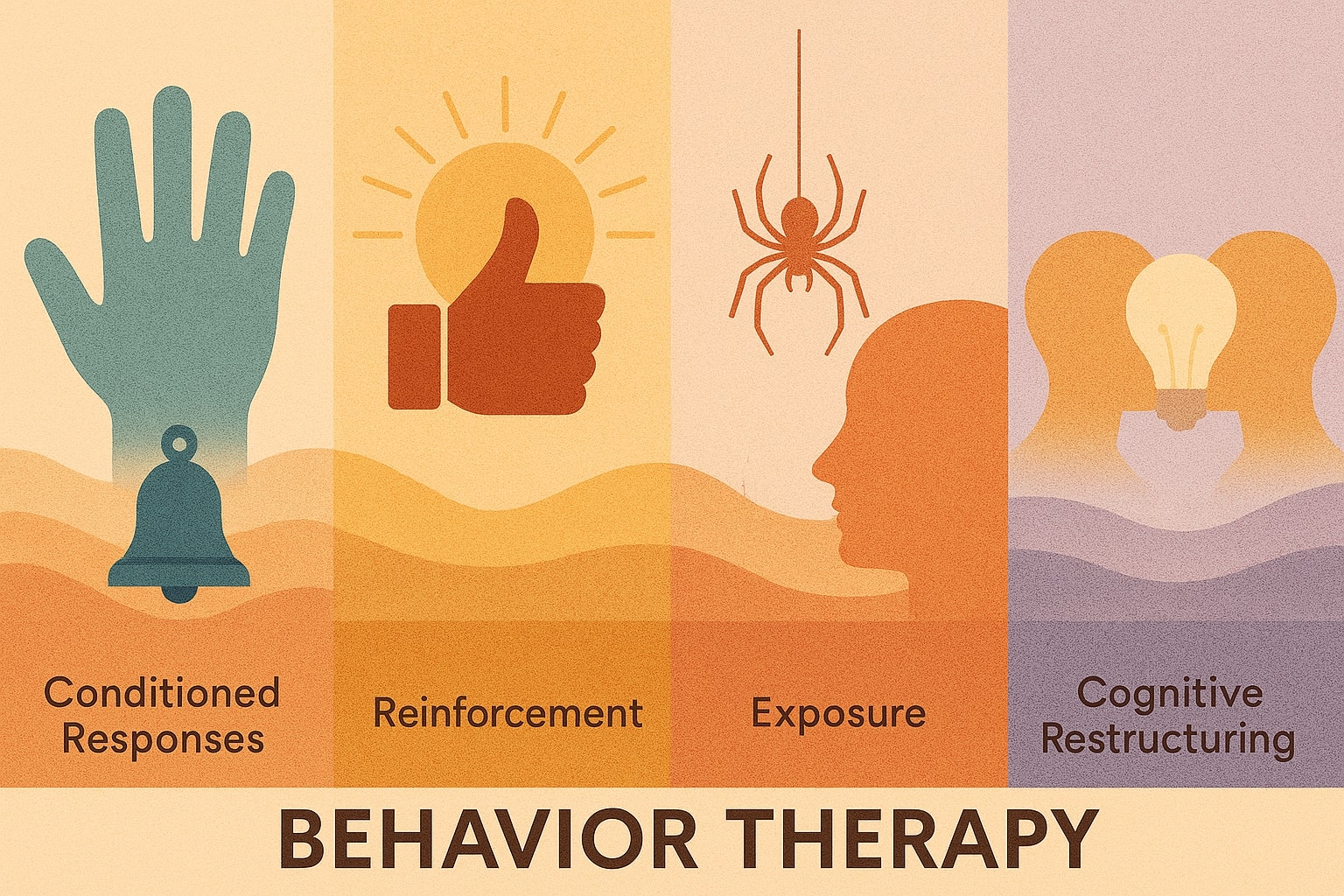Behavior Therapy for OCD is rooted in the principles of behaviorism—a school of thought that focuses on how people learn from their environment. Emerging in the early 20th century, behaviorism became a dominant force in psychology. Edward Thorndike was among the first to explore behavior modification, with the goal of reinforcing desirable behaviors and eliminating unwanted ones. Behavioral therapy assumes that problematic behaviors develop through the same learning processes as other behaviors, making them modifiable through structured intervention.
Principles of Behavior Therapy for OCD
Behavior therapy draws from classical conditioning (Ivan Pavlov) and operant conditioning (B.F. Skinner):
- Classical conditioning: A neutral stimulus paired repeatedly with a reflex-triggering stimulus eventually produces the reflex on its own.
- Operant conditioning: Behavior is shaped by consequences—reinforcement increases behavior, punishment decreases it.
Key Concepts of Operant Conditioning
- Positive reinforcement: Adding a desirable stimulus to increase behavior.
- Negative reinforcement: Removing a negative stimulus to increase behavior.
- Positive punishment: Adding an undesirable stimulus to decrease behavior.
- Negative punishment: Removing a desirable stimulus to decrease behavior.
Systematic Desensitization in Behavior Therapy for OCD
Systematic Desensitization is a type of exposure therapy based on classical conditioning, developed by Joseph Wolpe in the 1950s. It aims to gradually replace fear responses with relaxation through counter-conditioning.
Phases of Systematic Desensitization
1. Relaxation Training
- Clients learn relaxation techniques such as JPMR, meditation, or yoga to manage anxiety.
2. Construction of Hierarchies
- Clients create a hierarchy of anxiety-provoking scenes from least to most distressing (SUD scale).
3. Desensitization Procedure
- Clients imagine scenes in a relaxed state, starting from the least distressing and progressing upward until anxiety reduces.
Behavioral Modification in Behavior Therapy for OCD
Types of Behavioral Problems
- Excess behavior
- Deficit behavior
- Asset behavior
Accelerative Techniques
Shaping
Shaping involves reinforcing successive approximations toward a desired behavior using prompts and refinements.
Chaining
Chaining involves teaching complex behaviors step-by-step by linking smaller sub-tasks sequentially.
Prompting
Prompting uses verbal, visual, gestural, or physical cues to elicit desired responses.
Fading
Fading gradually removes prompts as the behavior becomes independent.
Modeling
Clients learn by observing live or symbolic models performing the target behavior.
Decelerative Techniques
- Changing antecedents
- Differential reinforcement of incompatible (DRI) and alternate (DRA) behaviors
- Differential reinforcement of low frequency behavior (DRL)
- Stimulus satiation
- Overcorrection
- Time out
Complex Techniques
Contingency Contracting
Clearly defined behavioral agreements with specified reinforcements and consequences.
Token Economy
Using secondary reinforcers (tokens) to shape desired behaviors, which can be exchanged for rewards.
Stimulus Control
Altering discriminative stimuli to increase or decrease the probability of a behavior occurring.
Extinction in Behavior Therapy for OCD
Extinction involves gradually reducing a behavior by removing the reinforcement that maintains it.
Techniques of Extinction
- Graded exposure: Gradual exposure to feared stimuli.
- Flooding & response prevention: Prolonged exposure until anxiety subsides.
- Implosion: Imaginal flooding using exaggerated, anxiety-provoking scenes.
- Covert extinction: Imagining a behavior without reinforcement to weaken it.
- Negative practice: Deliberately repeating an undesired habit to reduce it.
- Stimulus satiation: Repeated exposure to a reinforcer until it loses power.
Social Skills Training in Behavior Therapy for OCD
Social Skills Training (SST) improves social competence through structured exercises:
- Behavioral rehearsal: Practicing behaviors in imagined scenarios.
- Corrective feedback: Describing behavior and suggesting alternatives.
- Instruction: Teaching communication and problem-solving skills.
- Positive reinforcement: Encouraging desired behavior through rewards.
- Assertiveness training: Building honest and socially appropriate expression.
- Modeling: Demonstrating desired social behaviors.
- Role playing: Simulating social situations to build confidence.
Aversion Therapy in Behavior Therapy for OCD
Aversion therapy pairs unwanted behavior with discomfort to reduce its occurrence using classical conditioning techniques.


